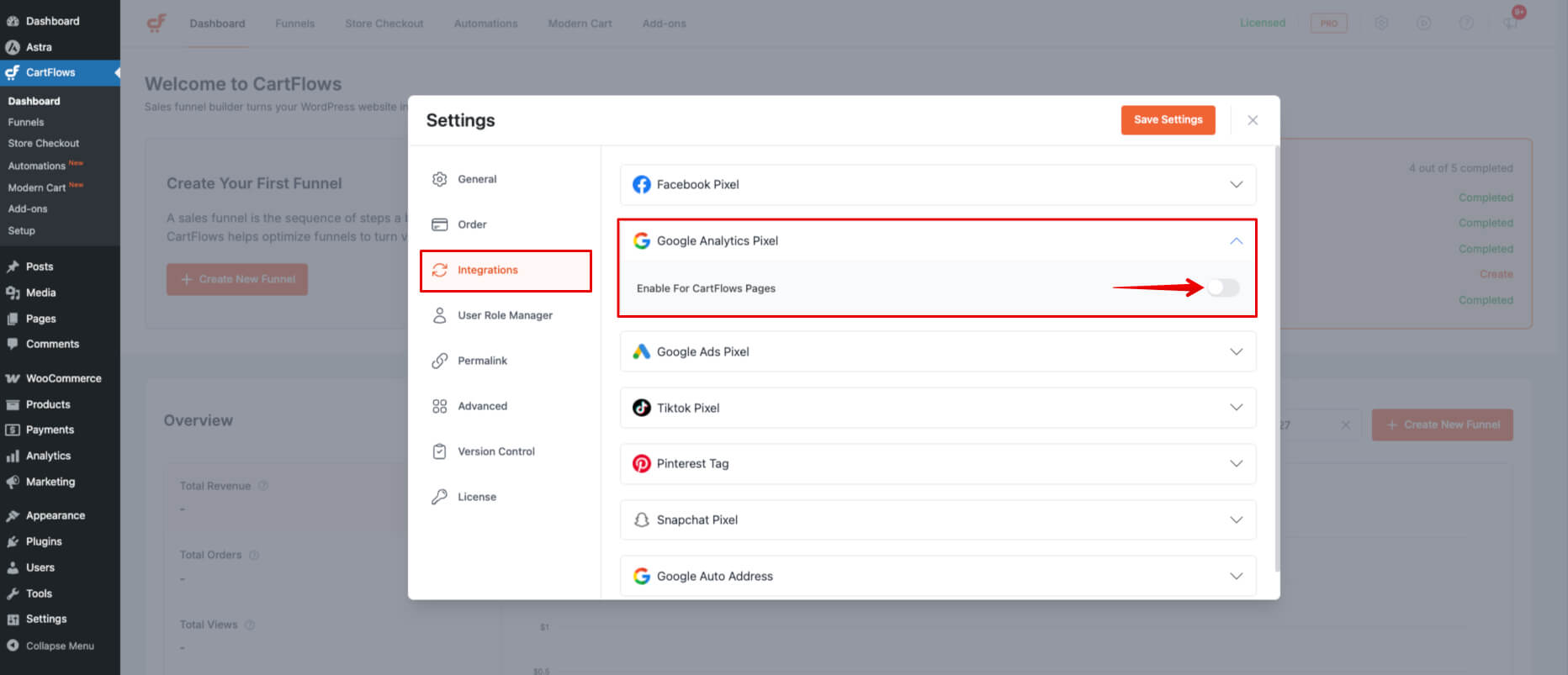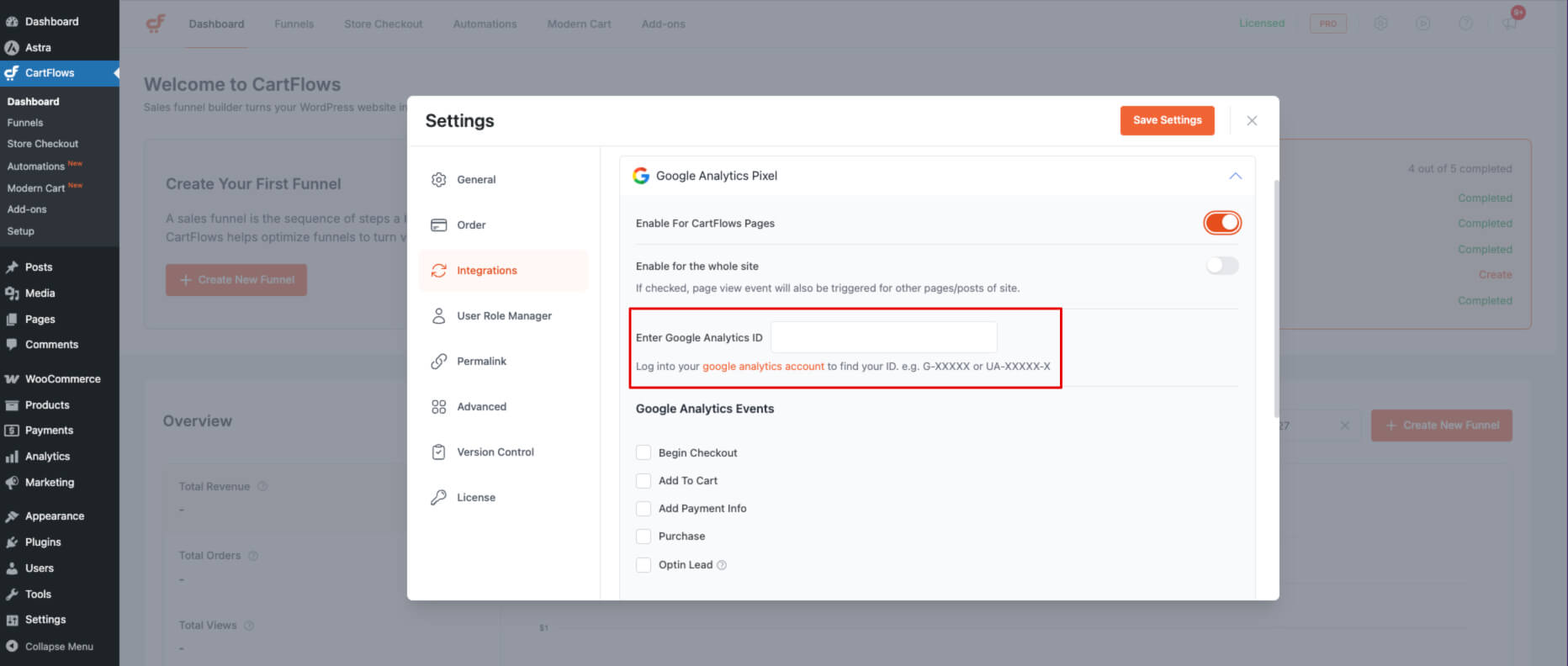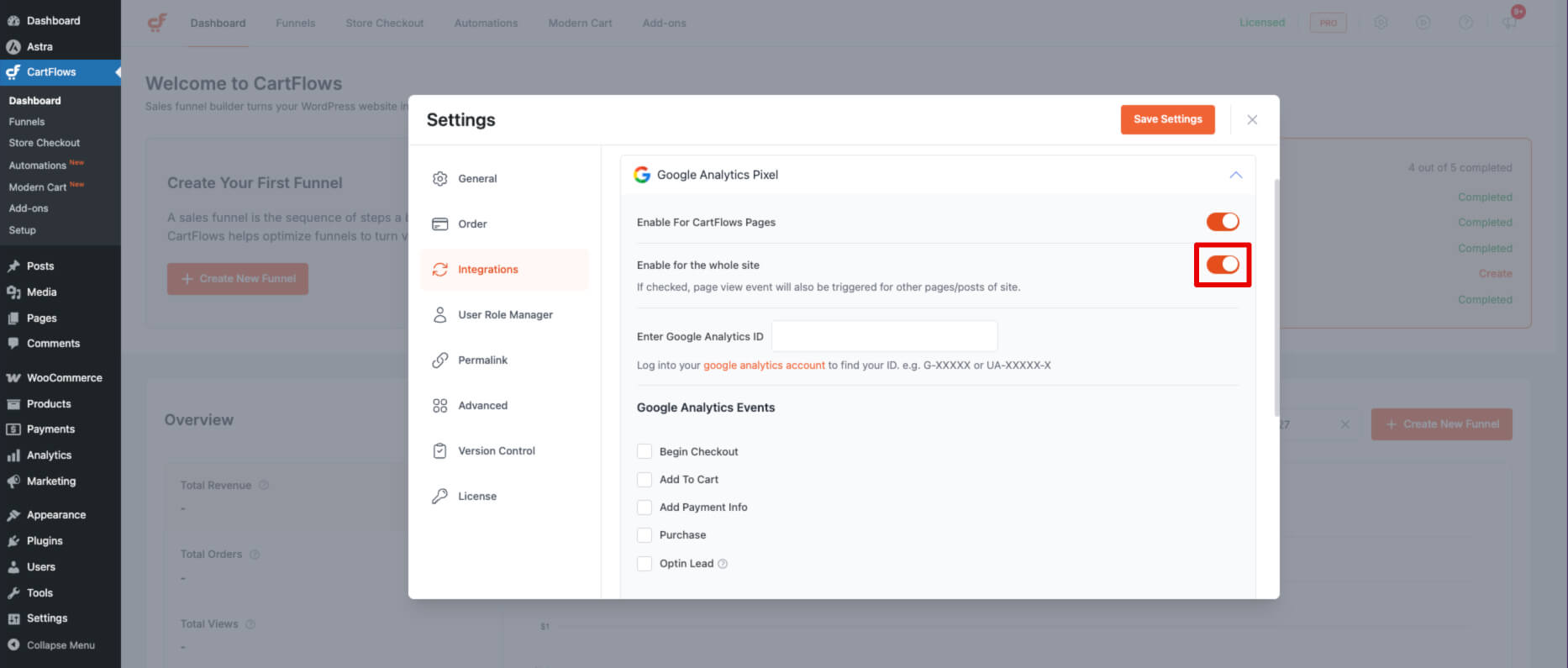- Hiding Fields on the Checkout Page
- Installing WooCommerce
- Using WooCommerce
- Using Your Theme's Header & Footer in a Step
- Embedding a Checkout Form on the CartFlows Checkout Page
- Hiding WooCommerce Pages and Products
- Using Pricing Tables
- Adding an Affiliate Program
- Setting a Funnel as the Homepage
- GDPR Compliance
- Dynamic Offers aka Rule Engine
- Instant Layout for Checkout and Thank You Step
- Adding Products from the URL to the Checkout Page
- Setting Up A/B Testing for Steps
- Deleting Plugin Data During Uninstallation
- Importing Ready-Made Templates for Funnels and Steps
- Importing and Exporting Funnels and Step
- URL Parameters
- Replacing the Main Checkout Order with an Upsell or Downsell
- Rolling back to a Previous Version
- Google Address Autocomplete
- Flatsome UX Builder
- ActiveCampaign
- Paypal Reference Transactions
- How PaypPal/Stripe Works
- Enabling Enfold Avia Layout Builder
- Setting Up Authorize.net for Upsell & Downsell
- Supported Payment Gateways
- Setting Up A/B Testing with Google Optimize
- Setting Quantity and Discount for Products on the Checkout Page
- Funnel in Test Mode
- Troubleshooting Plugin and Theme Conflicts
- Resolving the "Please Select a Simple, Virtual, and Free Product" Error
- Fixing Endless Loading on the Checkout Page
- Fixing the "We can't seem to find an order for you." Error on the Thank You Page
- Troubleshooting License Activation Issues
- Fixing the "Checkout ID Not Found" Error
- Fixing the "Session Expired" Error Message
- Resolving "Order Does Not Exist" Error on Upsell/Downsell Page
- Fixing the "Sorry, This Product Cannot Be Purchased" Error
- Disabling Auto-fill of Address Fields Based on Zip Code
- Enabling Theme's Scripts & Styles Without Changing Page Template
- Disabling Auto-fill of Checkout Fields
- Allowing Cache Plugins to Cache CartFlows Pages
- Changing the "Choose a Variation" Text
- VAT Field Not Displaying for WooCommerce EU/UK VAT Compliance Plugin
- Enabling the Product Tab on Store Checkout
- Displaying the Order Summary Open on Mobile Devices
- Refreshing the Checkout Page After CartFlows AJAX Calls
- Overview
- Installing Modern Cart Starter
- Installing Modern Cart for WooCommerce
- Activating License Key
- Customizing General Settings
- Customizing Cart Tray Labels
- Customizing Cart Icon Settings
- Customizing Cart Tray Styling
- Understanding the Product Recommendations Feature
- Controlling Product Recommendation Source for Empty Cart
How to Enable Google Analytics Tracking in CartFlows
CartFlows includes built-in support for Google Analytics. You can track funnel performance using predefined events that help you monitor user behavior across the Checkout page, Opt-in page, and more.
This documentation shows how to enable Google Analytics tracking in CartFlows and where to enter your measurement ID.
Before You Begin
Make sure you have:
- A Google Analytics account (Universal or GA4)
- Your Tracking ID (for Universal Analytics) or Measurement ID (for GA4)
If you haven’t set it up yet, refer to these official guides:
Enable Google Analytics in CartFlows
1. From your WordPress dashboard, go to CartFlows > Settings > Integrations.
2. Click the Google Analytics Pixel tab.
3. Enable the toggle for Enable for CartFlows Pages.

4. Enter your Tracking ID (Universal) or Measurement ID (GA4) in the Enter Google Analytics ID field.

5. To track CartFlows events across the entire website, enable the second toggle: Enable for the whole site.

Once set up, CartFlows will start sending tracking events to Google Analytics.
Events Tracked by CartFlows
The following are the available events:
- Begin Checkout
- Add to Cart
- Add Payment Info
- Purchase
- Opt-in Lead
Is CartFlows Compatible with GA4?
Yes. CartFlows is fully compatible with Google Analytics 4 (GA4).
To get your GA4 Measurement ID:
- Go to the Admin Panel in your GA4 property.
- Pick the Analytic Account.
- Select your Property.
- You will see your Measurement ID, which begins with G-.

Enter this ID in the Enter Google Analytics ID field in CartFlows settings.
Troubleshooting
If tracking is not working, check that your Measurement ID is correct and that the toggle is enabled.
Refer to this article for more help: How to Troubleshoot Google Analytics Tracking in CartFlows
We don't respond to the article feedback, we use it to improve our support content.